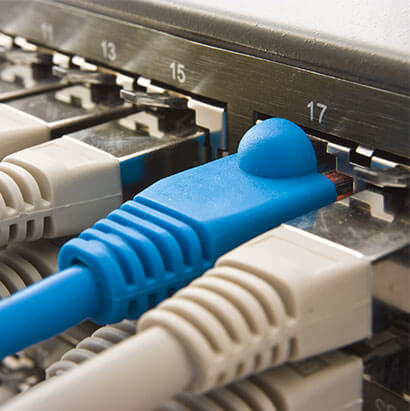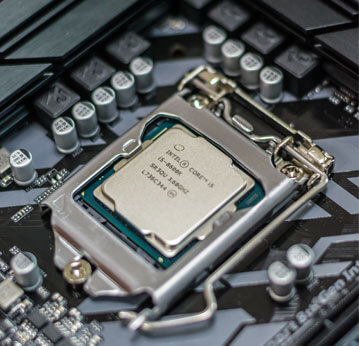Without a secure failover, erratic fixed line connectivity can cause havoc, especially in the high-demand, fast-paced fast food sector. As the name suggests, the expectation is that both the food and service are delivered quickly, and at a standardised (high) level of quality.
Modern customers require modern restaurants. As smart technology becomes the norm, diners expect reliable, high-speed networks and communications solutions, especially in the fast-food environment. These contemporary restaurants must, therefore, offer reliable POS systems and dependable back-office administrative support. In order to deliver on these requirements, a stable network is required.
– Brad Fraser, Infoprotect CEO.
“For Nando’s, downtime means an unreliable point-of-sale (POS), lost revenue and a frustrated customer base,” advises Sugan Ganasen, Cradlepoint Lead: Ingram Micro Southern Africa. The beloved fast-food franchise started in 1987, with the first restaurant opening in Rosettenville, Johannesburg. “With a broad footprint of over 1 000 franchises across the globe, and 259 branches in South Africa alone, sending customers away because the POS isn’t working simply isn’t an option.”
According to Stephen Brookstein, Nando’s Head of Technology: South Africa and EMEA; “Nando’s is 30 years young, and facing the same challenges as all business in the local market. Stability is the key to offering customers a better experience, and this requires an integration of technology.”
Stephen Brookstein, Nando’s Head of Technology South Africa and EMEA.
In South Africa, the pace of work is at an all-time high. In the food and beverage industry, this means that downtime results in exponential losses, and reputational damage that may hinder relationships with a fickle consumer base. Whenever connectivity is interrupted, credit/cheque card payments cannot be accepted, and off-line card payments are particularly susceptible to fraud. With no secondary line for a failover connection, the required constant connection cannot be achieved.
“Customers expect to be able to make a card payment on a secure POS system, and our franchisees expect a constant connection. In a digital age, everything relies on internet access, and constant uptime must be achieved to deliver both productivity and profitability,” says John Sikiotis, Chief Strategy Officer and CFO: India, Middle East and Africa at Nando’s. “As such, our business needs include full failover capability, centrally managed software, improved response to communication issues experienced at restaurant level, enhanced security and PCI compliance – all delivered in a scalable manner across the continent.”
After much market research and a comparison of the solutions available, Nando’s deployed Cradlepoint’s AER2100 and NetCloud Manager, supported by Infoprotect. This delivered reliable 99% uptime across all Nando’s restaurants in South Africa, guaranteeing that sales are never lost and customers are always satisfied.
“Nando’s selected a countrywide store advanced offering, which ensures that each store is fitted with a Cradlepoint AER2100,” confirms Ganasan. This solution is a new generation, cloud-managed 3G networking device that helps Nando’s to increase bandwidth and achieve four-nines reliability in a secure, flexible, and open-architecture platform. The AER2100 operates as the primary connection, with a cellular modem and dual SIM capability.
Sugan Ganasen, Cradlepoint Lead Ingram Micro Southern Africa.
Implemented by Infoprotect, offering managed IT solutions, data usage is centrally managed, monitored and controlled using the NetCloud Manager (Enterprise Cloud Manager). “This enables Nando’s to deploy and dynamically manage networks at geographically-distributed stores and branch locations, improving productivity, reducing costs and enhancing the intelligence of the network and business operations,” advises Brad Fraser, Infoprotect’s CEO.
This monitors ADSL data usage and adds valuable business resiliency. According to Sikiotis: “The NetCloud Manager allows Infoprotect to perform remote diagnostics, upgrade firmware, and configure devices remotely. This means our restaurants enjoy better return on investment with optimised data usage, real-time monitoring, load-balancing and proactive usage alerts.”
The result is a scalable solution offering effective uptime, a primary and secondary network ensuring a constant connection, uninterrupted card transactions, constant uptime, data usage management, PCI compliance and security, automated support, configuration and monitoring, and sophisticated scalability.
“These solutions were impeccably implemented within tight timelines, and have created a future upgrade path, ensuring minimal disruptions. The benefits offered speak for themselves,” concludes Sikiotis. “The cost-efficiencies realised include less downtime, more satisfied customers and less data breaches. Customers are satisfied and no sales losses are experienced due to offline POS systems. With this in mind, a reliable network and constant uptime offer a real cost-saving solution.”
This article was originally published on IT Web.



















